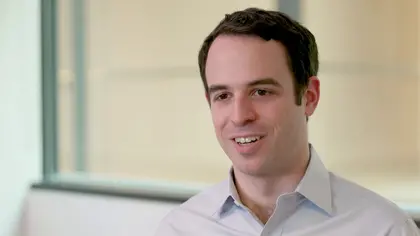
MBA and Art Students Collaborate on Cryptocurrency Projects
An independent study course brought students from the Yale School of Management and Yale School of Art together to explore the possibilities of cryptocurrency.
By Karen Guzman
The worlds of art and finance aren’t that far apart. That’s what students from the Yale School of Management and the Yale School of Art learned last semester during an independent study course that brought them together.
The students took part in a cryptocurrency workshop organized by the two schools, exploring the relationship between art and money by creating new “currencies,” based on the cryptocurrency structure that has produced decentralized digital currencies like Bitcoin. Renowned German conceptual artist and filmmaker Hito Steyerl worked with the students.
“There’s an interesting relationship between art and money,” says William Goetzmann, the Edwin J. Beinecke Professor of Finance and Management Studies and director of the International Center for Finance, who helped shape the course along with Ayham Ghraowi, assistant dean for research and public projects at the Yale School of Art.
Twenty-five students participated—20 art students and 5 MBAs—following separate curricula and then collaborating on creative projects. “Cryptocurrency turned out to be a wonderful catalyst for engagement,” Goetzmann says. “There’s a long history of artists engaging with money and trying to understand what it is and using it as a symbol.”
MBA student Jack Hutton ’20 says the course was eye-opening. “I thought this would just be an interesting intersection of finance and art, but it became a fully interdisciplinary discussion where psychology, history, and science were all discussed seamlessly and fluidly in order to generate project ideas,” he says. “We had to dig deep into everything we’ve studied to figure out how to talk about this subject.”
In the workshop, each team of five art students and one MBA student developed a work of art that explored the relationships between money, value, and art. Hutton’s team created a digital coin that is designed to acquire value over its lifetime; for now, he doesn’t want to say exactly how. (Stay tuned to find out more. “We actually have a prototype coded, and we’re hoping to release the coin sometime in the spring,” he says.)
Hutton, who has worked as a software developer in fintech, says that his biggest takeaway was a greater understanding of the role of art in addressing complex issues.
“Art is about more than making ‘art’ pieces,” he says. “It really is about taking in the world and questioning what it means. It was an interesting parallel to business school, where we do more than figure out how to make profits. We explore how business affects society, individuals, and citizens.”
The workshop organizers had originally anticipated that the MBA students would act in project management roles during the course. But Hutton says that their role expanded. “Very quickly it evolved into everyone contributing artistic elements,” he says. “You could see, depending on who composed each group, how the teams moved in different directions, some to more abstract art and others to projects that were very tangible.”
Students also benefitted from visiting faculty speakers from other Yale schools. They included a talk by Yale economics professor Aleh Tsyvinski, who recently did a study of Bitcoin as an investment; a lecture from law school research scholar Nancy Liao on the legalities surrounding cryptocurrency; and seminar sessions with visiting Indiana University historian Rebecca Spang, who spoke about innovations in money during the French Revolution and presented perspectives on the visualization of Bitcoin. “It was wonderfully interdisciplinary and just the kind of thing you would expect to happen at a place like Yale, where there is a lot of cross-pollination,” Goetzmann says.
The Yale School of Art Dean and Professor of Art Marta Kuzma notes the workshop is one of several cross-disciplinary efforts that the school is initiating within the university. “In each, we seek a cooperation that privileges each respective area on its own terms, without reducing art as a decorative or ornamental element.” Kuzma notes further, “This workshop on cryptocurrency evolved into a dialogue around trust and the social contract, and in this way furthered the discussion around the role of art with respect to the economic, the social, and the political.”
Goetzmann agrees. “For art students, this was a fantastic opportunity. If they want to make art that is about economics, about money, about finance and its role in society, this was a chance to learn from MBA students. And for [MBAs] to be able to connect directly with artists is just a rare opportunity… To see how artists think and create and explore and help them do that, is just a wonderful chance.”
Watch a Yale Insights interview with William Goetzmann on cryptocurrency and financial history.




